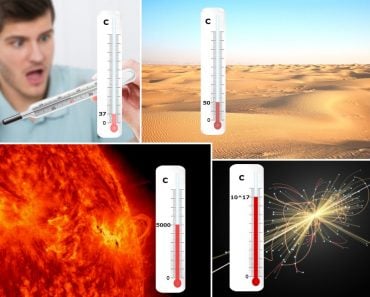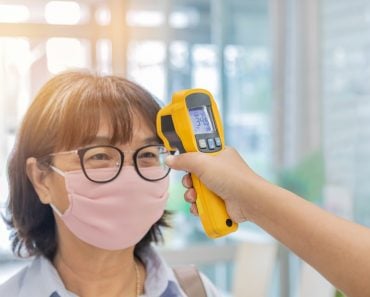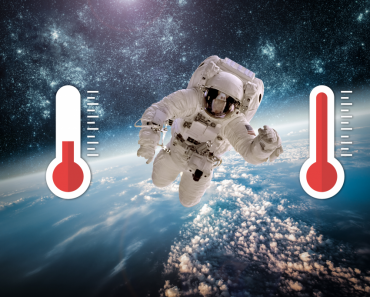Feels like temperature takes into account factors such as wind and humidity to find out how the weather would feel if one actually steps out.
Have you ever looked at the weather forecast and decided it was a perfect day for a picnic, but after stepping outside, you felt much warmer or colder than the weatherman predicted?
You have likely heard the term “feels like temperature” before. Most weather channels and meteorology apps have started using this term along with their usual vocabulary to give people a better understanding of how they will feel out in their environment.
So, what is this “feels like temperature,” and why is it different than the actual weather conditions?
Recommended Video for you:
How Do We Measure Temperature?
To better understand this slightly nuanced topic, we must first understand the more fundamental concept of temperature. Temperature is the measure of hotness and coldness. It is the degree of heat present in a substance that gives us the sensation of warmth. On a molecular level, temperature is the average kinetic energy possessed by the atoms of a material. The higher an object’s temperature, the higher its kinetic energy.
Many units are attributed to temperature measurement, but the most famous are Celsius, Fahrenheit, and Kelvin.

Temperature is typically measured by devices known as thermometers. Various types of thermometers are available on the market today, including gas-bulb, mercury, and bi-metal thermometers.
However, the mercury-in-glass thermometer, commonly called a maximum thermometer, is the simplest and most widely used. Its operation is based on the fundamental principle that liquids expand when heated and contract when cooled.
Consequently, when the temperature rises, the mercury expands and rises the tube; when it falls, it contracts and does the opposite. These movements are compared to a reference point to obtain the temperature readings.
What Is A Stevenson Screen?
A Stevenson Screen is a standard shelter to protect meteorological instruments, especially thermometers, from environmental factors such as rain and ultraviolet radiation. It is a simple wooden box about 2 meters tall and painted white to reflect direct sunlight.
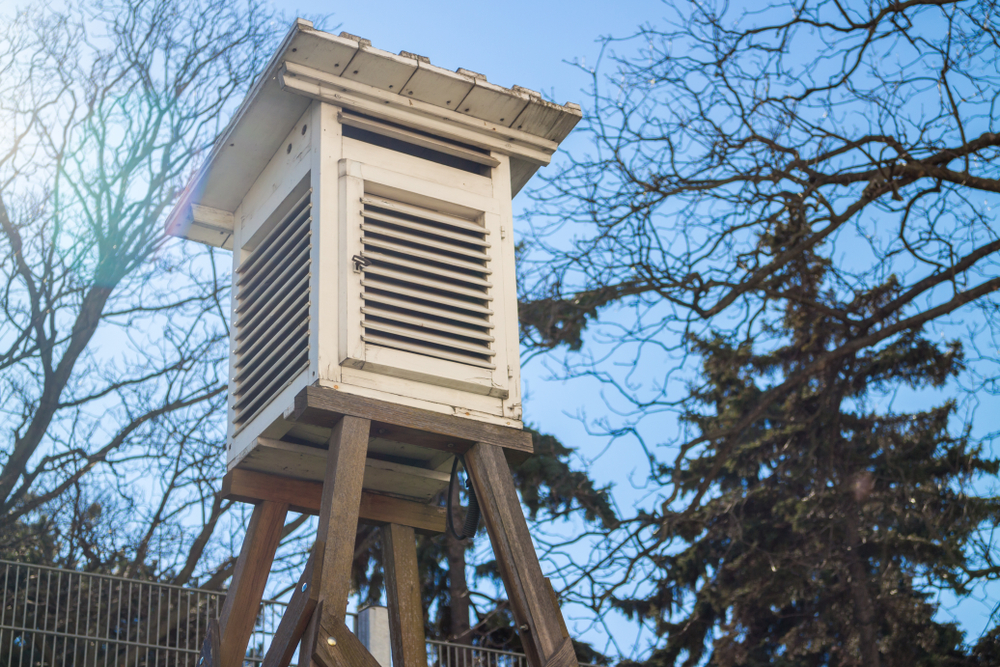
To obtain accurate temperature readings of a substance or atmospheric region, it is important to eliminate external factors that could affect the measurements. This is why Stevenson screens are crucial in providing the most precise temperature estimates.
What Is “Feels Like Temperature”?
As we have discussed earlier, temperature measurement involves recording the air temperature using a thermometer that is placed inside a Stevenson screen or any other appropriate instrument.
However, the “feels like temperature” is a calculated figure that considers several other factors besides the temperature of the surrounding air. This metric provides people with a more accurate understanding of how they would feel if they were to go out in an area where a meteorological instrument recorded the temperature.
The “feels like temperature” considers factors such as the speed and strength of wind, the temperature of the air, relative humidity in the area, and the rate of heat loss from a human body when covered in clothes.
When all these factors are combined with the measured temperature of the surrounding area, the final result is the “feels like temperature.”
So, how do these factors affect our perception of hotness and coldness?
Why Does Wind Make Us Feel Colder Than It Really Is?
Let’s consider fast-moving wind for a moment. Humans are warm-blooded animals, so our body maintains itself within a fixed range of temperature—37 degrees Celsius is the average temperature of a healthy human body. Now, this heat flowing inside our hands, legs, and other body parts is transferred to the skin, which in turn heats the air surrounding it. As the temperature difference between our body and the air is reduced, we feel warm and cozy. What wind does is push this warm layer of air away, leaving our skin exposed to the surrounding cooler air, which makes us feel colder.
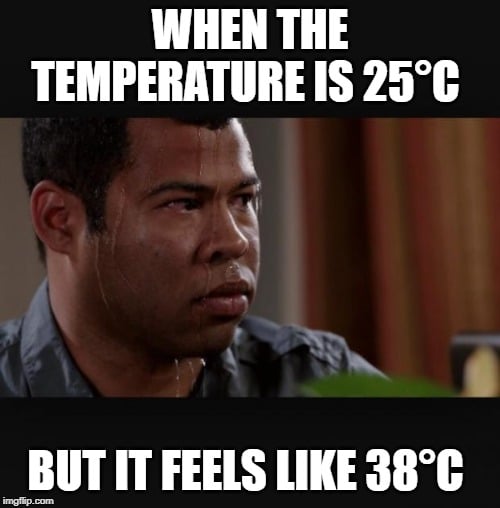
Why Does Humidity Raise The Temperature Around Us?
Humidity plays a significant role in changing our perception of temperature. On a warm and sunny day, our body uses a special process called sweating to cool down our body’s temperature. Sweat absorbs the heat from the surrounding air and evaporates off our skin, providing a cooling sensation. This process is called evaporative cooling.
However, if the air around us is humid, meaning it already carries water, the evaporative cooling is significantly reduced. As a result, the warm air and sweat remain on our skin, which makes us feel even hotter than the surrounding temperatures.
Meteorologists use the Heat Index to measure the “feels like temperature.” The Heat Index combines air temperature and dew point (relative humidity) to determine the temperature humans perceive.
For instance, at 85 degrees Fahrenheit with 10% humidity, the temperature feels closer to 79 degrees, but at 90% humidity, it will feel closer to 100 degrees. These values are found using a complex formula, but the National Weather Service has made it simple for everyone by creating a Heat Index Calculator.
So, the next time someone asks you what the temperature is, don’t forget to mention what it “feels like” too!
Last Updated By: Ashish Tiwari
References (click to expand)
- What is 'feels like' temperature?.
- Weather Facts: Stevenson Screen | weatheronline.co.uk.
- Klöwer, M., Edouard, P., Niess, A. M., Racinais, S., Pitsiladis, Y. P., Pappenberger, F., & Hollander, K. (2023, March 7). Forecasting feels-like temperatures as a strategy to reduce heat illnesses during sport events. British Journal of Sports Medicine. BMJ.


